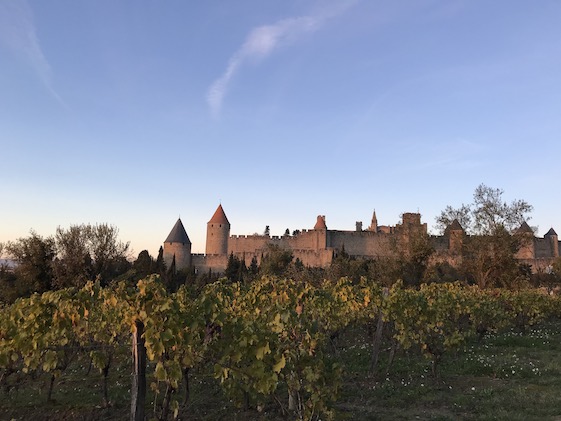While the Languedoc region of southern France has been hailed recently as a “new” source of fine wines, it’s been making wine for some 2,000 years. It’s France’s largest wine region, responsible for producing a third of the country’s wine.
The Languedoc is also known as the world’s largest organic wine region. And it’s the birthplace of sparkling wine, though Champagne tends to get the credit.

Languedoc Wines hosted a group of journalists [Editor’s note: Pre-COVID-19 crisis] to learn more about the region, the history and the wines this past November. From the capital Montpellier to the former Roman city of Narbonne and the medieval walled town of Carcassone, we met with winemakers throughout the area. Here’s a bit of what we discovered about the Languedoc.
A Unique, Diverse Terroir
Part of the greater Languedoc-Roussillon region, the Languedoc makes up the bulk of the territory. The region in 2016 was joined with the Midi-Pyrénées to form the new administrative entity of Occitanie.
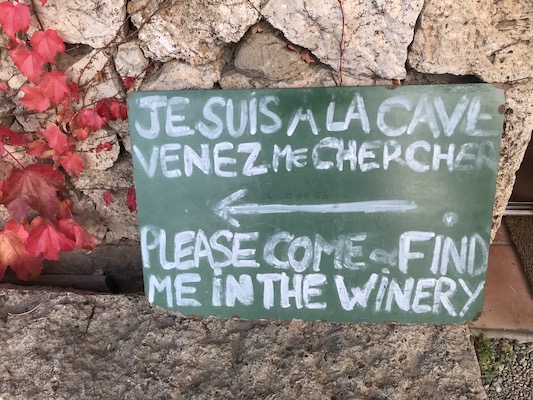
Situated between the Mediterranean and the Atlantic Ocean, with the Pyrenees in the South and the Massif Central in the North, the Languedoc enjoys nearly 320 days of sunshine a year, with low rainfall from March to October.
The strong winds tend to benefit winegrowers by bringing moisture from the sea or by delivering fresh mountain air to dry the vines. The wide variety of clay-limestone soil types helps regulates soil temperature. The differences of soil type, altitude and proximity to the sea all make for a diverse terroir.
What’s more, aromatic vegetation growing on the limestone hills, such as thyme, bay and rosemary, can produce wines with the garrigue aromas.
Reds Rule, But Rosés and Whites on the Rise
The area has 23 Languedoc appellations and 19 PGIs (Protected Geographical Indications). Most of the wine (74%) from the Languedoc appellation is red; 16% is rosé and 10% is white.
The primary white grape varieties include grenache blanc, bourboulenc, clairette and marsanne, while syrah, grenache noir, mourvèdre, cabernet franc, carignan and cinsault are the common grapes for reds and rosés.
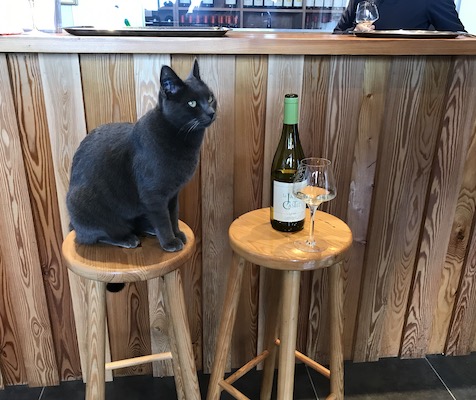
As rosé’s popularity has surged, so has the Languedoc’s production of the style—up nearly 70% in the past six years. Several vineyards are also planting more white grapes to meet demand. An ancient white variety is picpoul, used in the fresh, crisp picpoul de pinet wine that’s starting to catch on in the U.S.
Sparkling Wine First Bubbled Here
Sparkling wine was discovered in 1531 at the Abbaye de Saint Hilaire, a small Benedictine abbey built in Limoux during the Middle Ages. As the legend goes, the monks found that the wine they were making was starting to bubble in the bottle.
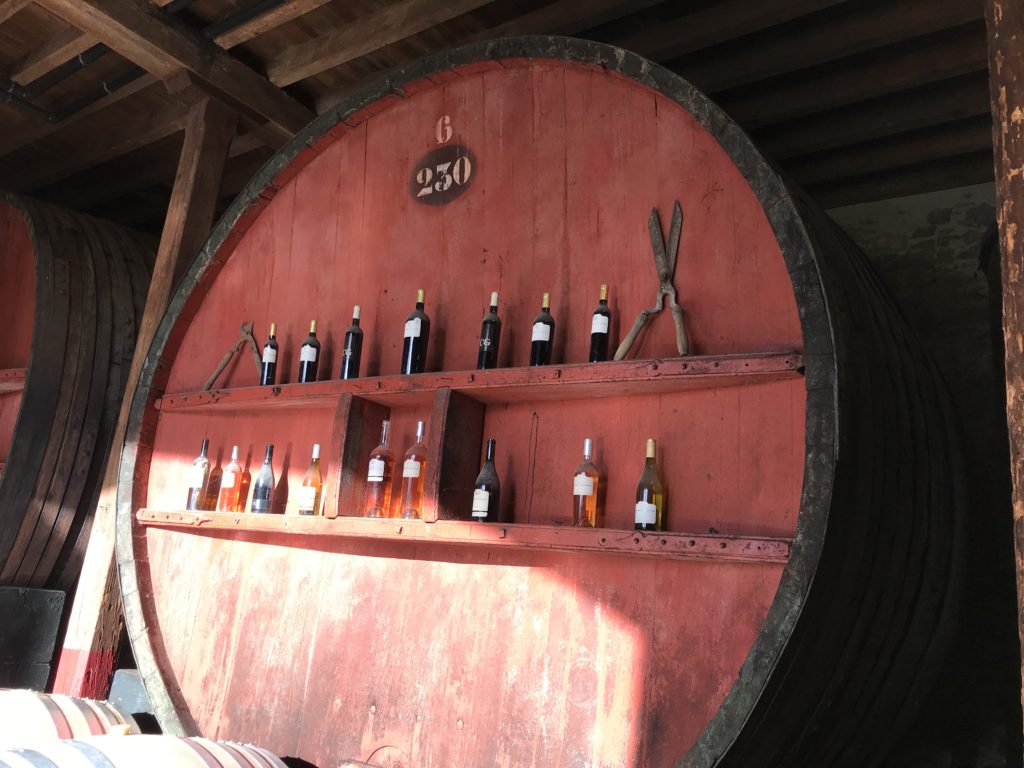
Winemakers in Limoux have been perfecting the art of sparkling wines ever since. (Some locals say that Dom Perignon had visited the abbey before settling in Champagne, and brought the idea of sparkling wine with him.)
“There is no difference between what we do here and what they do in Champagne—except price,” says Francoise Antech-Gazeau, a sixth-generation winemaker with Maison Antech in Limoux. Antech focuses on the three sparkling appellations of the area: cremant de Limoux, blanquette de Limoux and Limoux methode ancestral.
Crazy for Cassoulet
While there’s plenty of seafood, olives and cheese, the south of France really loves duck. The regional dish around Carcassone is cassoulet, a rich stew made from duck, pork and white beans.
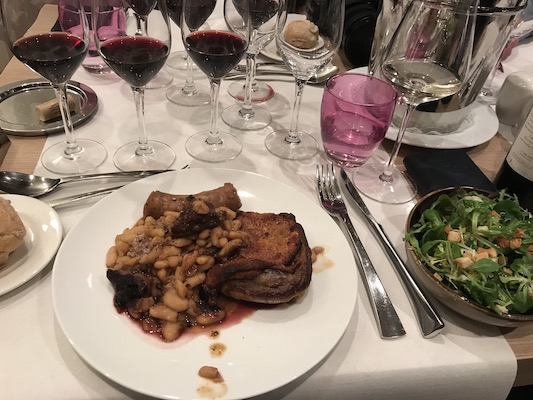
Recipes vary, but we were treated to the real deal one night at the Maison Ventenac winery. Olivier Ramy, who runs the company with his wife Stephanie, served us a cassoulet made by his mother-in-law.
Bertrand is the Brand Ambassador
The growing interest in the Languedoc can be credited in large part to the winemaker Gérard Bertrand. He owns 15 vineyards, including Domaine de Cigalus, Château Laville Bertrou, Château l’Hospitalet, Château Aigues Vives, Domaine de l’Aigle, Château la Sauvageonne, Clos d’Ora, Château des Karantes and Domaine du Temple, all of which are either certified biodynamic or in the process of becoming so.
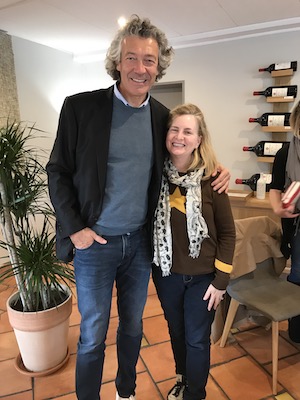
Bertrand has been making wine for more than 30 years and has long championed the Languedoc’s terroir. “Wine must not have the taste of something; it must have the taste of somewhere,” he says.
He recently gained fame in the U.S. for teaming up with rock star Jon Bon Jovi and son Jesse Bongiovi on a Languedoc rosé brand, Hampton Water. The blend of grenache, cinsault and mourvèdre launched in 2018.
Bertrand also draws tourists to the region with Chateau l’Hospitalet, an estate near Narbonne that he bought in 2002. The Chateau, which includes a restaurant called l’Art de Vivre and a 38-room hotel overlooking the Mediterranean, aims to showcase the Languedoc lifestyle. “We like to enjoy life, and we like to share it,” Bertrand notes.
Melissa Dowling is editor of Cheers magazine, our on-premise sister publication. Read her recent story, America’s Fastest-Growing Wine Brands.

